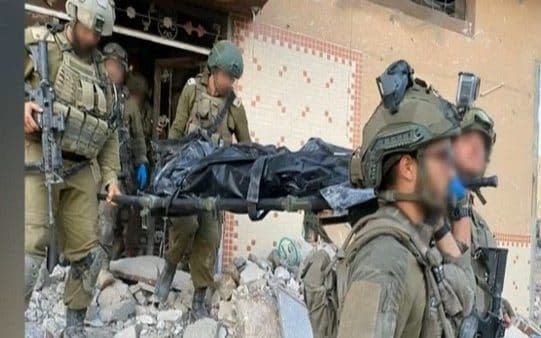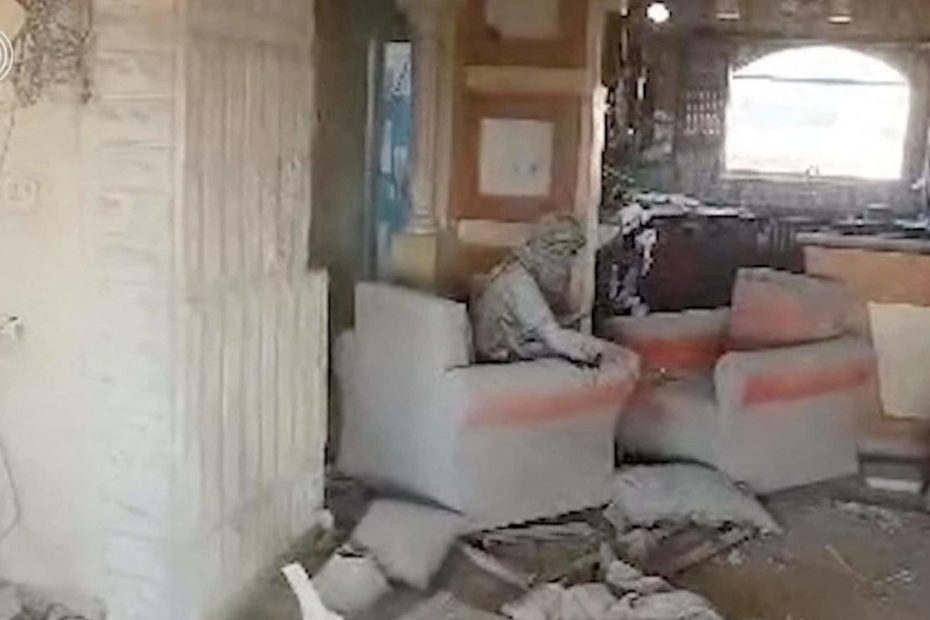This embedded content is not available in your region.
IDF
A drone glides through a glassless window on the second floor of a battle-scarred building.
Through the cloud of dust kicked up by the propellers, the IDF operators saw a lone man, his face covered, hunched over an armchair.
It is a wounded Yahya Sinwar, the leader of Hamas and the mastermind of the October 7 massacre, with a stick in his left hand.
Brandishing his makeshift weapon at the drone, Sinwar limply throws it at the floating device, as if resigned to the fate that he was about to die.
Moments later, an Israeli Merkeva tank fired at the mysterious figure, while the soldiers were unaware that it was Sinwar, Israel's most wanted man.
He was one of three terrorists spotted between buildings in Rafah's Tel Sultan area.
Two walked forward, as if clearing a path for the third man who followed them from behind.
A tank opened fire, forcing the trio to split up.
One climbed to the second floor of a building to seek protection from his hunters.
Body found with Mentos mints
Israeli soldiers tried to enter the structure but retreated after the lone terrorist threw two grenades in their direction.
At that point, they sent the drone to search the building before opening fire on it again.
It was only when the building was searched again by IDF forces that they discovered that the man with a covered face and injured arm was the leader of Hamas.
Sinwar's lifeless, rubble-covered corpse was found with a selection of Mentos coins, weapons, cash and fake ID cards.


It was recovered and returned to Israel for DNA and dental testing to confirm that Israel had its man.
The IDF had been hunting the man who planned the October 7 terrorist attack for more than a year.
He was believed to be hiding in Hamas' tunnel network deep beneath Gaza.
Daniel Hagari, the IDF spokesman, said Sinwar likely tried to “escape north to safer areas” as Israeli forces closed in on him.

